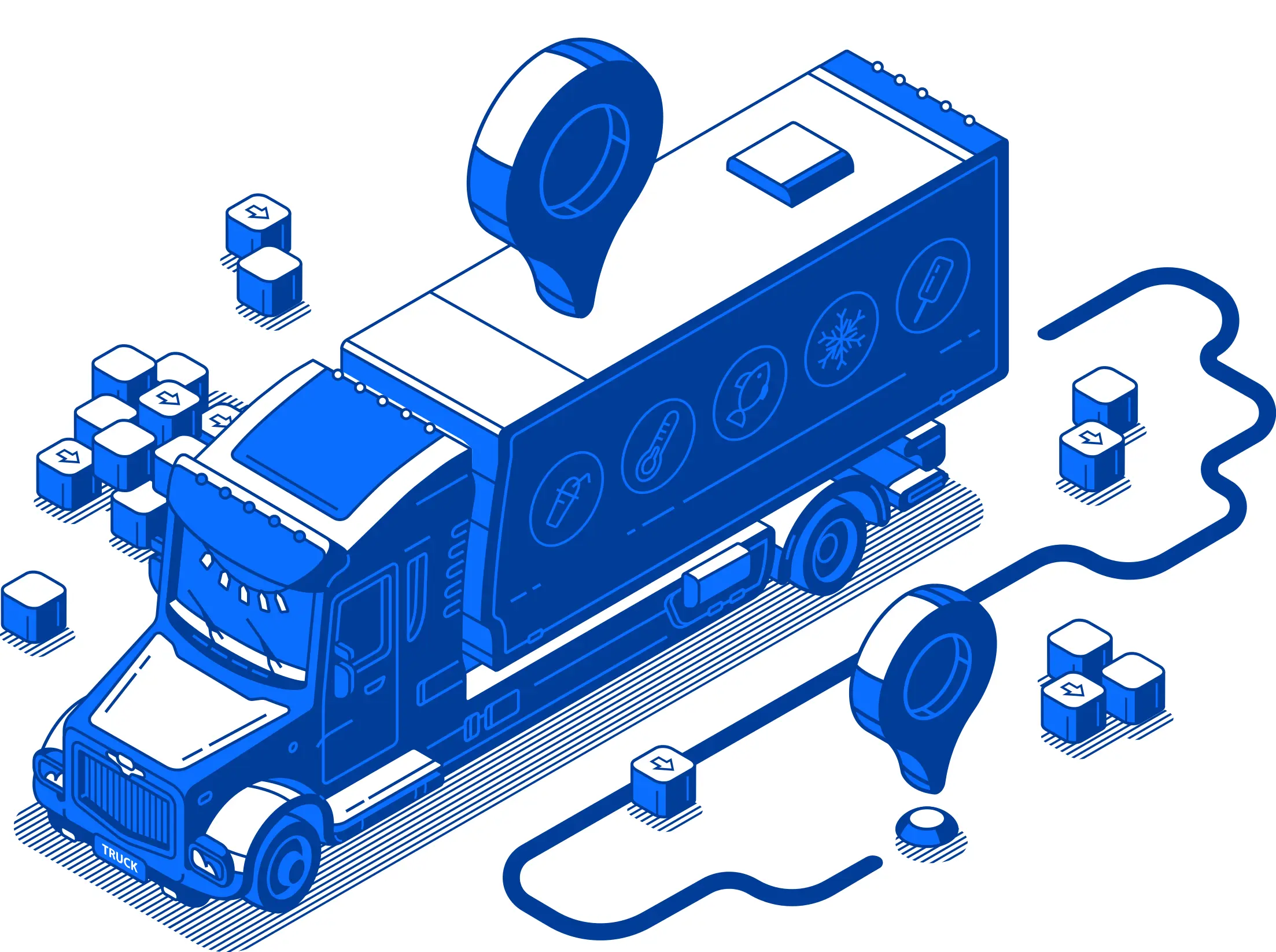It’s your goal this year to maximize your loads. You need revenue growth to afford to give your drivers raises and invest more into your trucking company’s growth. What are the best ways to get bigger profits from your loads this year?
Calculate Your Cost Per Mile
Before you get started, you need to know the cost per mile. If you’re losing money on the loads you have or plan to take on, you need to adjust your rates. How do you calculate your cost per mile?
Step #1 – Fixed Costs
Calculate your company’s fixed costs. These don’t tend to change much. It includes your truck and business insurance, loan payments for your trucks and trailers, and mortgage or rent. It also includes utilities like water, heat, and electricity, worker’s comp, licensing, IRP, phones, and ELDs. Finally, consider subscriptions you have for apps and software like tax software and security packages that protect your office computers from malware, spyware, viruses, etc.
Step #2 – Variable/Changing Costs
Some of your monthly business expenses change from one month to the next. The cost of fuel for your trucks, building and truck maintenance and repairs, and permits vary. You’ll also find driver pay changes, taxes can change, and fees for scales also change. There are also unexpected fees if road closures or washouts cause delays or new routes.
Step #3 – Combine Your Expenses
Add those numbers together to get a total for your monthly expenses. You’ll divide that number by the number of miles your drivers completed. That gives you an estimated cost per mile. Before you agree to haul a load, you must ensure that the cost per mile being offered covers your expenses and provides some revenue at the same time.
Fill Your Trucks
Now that you’ve calculated your cost per mile, you know how much you need to get per load. How often are your trucks half-full on the way to the drop-off point? You want full trucks, not empty legs. If you have to fit multiple brokers or shippers’ jobs into your haul, do so. It’s better to have a full truck for the trip.
Suppose you’re heading from Chicago to Boston with a load filling half of your truck. Look for another load with a drop-off point somewhere before you reach Boston. You’ll be dropping off that new load first, so you want it in the back of the truck. Once you drop it off, you continue to Boston. You’re making one trip, but you know how two incoming payments for the one trip.
For example, there’s a half-load job on a job board going to Boston. Another half-load job has a drop-off point in Frewsburg, New York. You look at a map and see Frewsburg is on the way to Boston. Take both of the jobs and get the extra money.
Even better. See if there is a half-load job going from somewhere near Frewsburg to one of Boston’s suburbs and get three jobs done on one trip.
Pick Up a Load for the Return
Following the same tip about making sure you’re filling trucks. Don’t overlook the trip back when it comes to avoiding empty legs. Go back to the journey your driver has made to Boston. Before your driver leaves, secure loads for the drive back to Chicago. If you keep the trucks full, you maximize your revenue.
Fill a Niche
Not every load is something a trucking company can and will carry. It pays off to fill a niche. Loads requiring experienced drivers for HAZMAT, oversized loads, and machinery pay more than many loads because of the different training and endorsements. The increased pay is often worth it.
Keep Your Best Customers Happy
When you’ve been working with a broker or shipper and they keep coming back, you’ve made them happy. Keep that going. Prioritize their loads as much as you can. If they’re satisfied, they’re likely to tell others about you. The word-of-mouth recommendations pay off.
Utilize Load Boards to Find New Customers
You may need to fill gaps with new customers’ loads. How do you find all of these loads? Use load boards. If you factor your invoices with Saint John Capital, you can access our load boards that are easily accessible from your Android or iOS smartphone. We offer a 60-day free trial to ensure your satisfaction.
Our load boards have millions of jobs available, and you can find loads going to cities across the nation. This makes it easy to get paid for your entire trip and avoid having empty legs and deadhead miles. Plus, you can request broker credit checks to ensure that you’re not accepting a load with a client who doesn’t pay.
Monitor and Learn From Your Driver’s
Monitor your driver’s habits. Speeding increases fuel consumption, which drives up your costs. If your drivers feel they have to speed to meet your desired time frame, it’s time to adjust your expectations. Slower is not only safer, but it will also save money on fuel and repairs.
Cut Your Fuel Costs
Look into a fuel card that provides your trucking company with diesel or gas at a discounted rate. The savings on gas alone can boost your revenues by driving down expenses. When you pair fuel discounts with a reduction in empty legs, you’ll succeed in growing your revenues.
Use GPS to Plan Routes, but Teach Drivers to Pay Attention, Too
Many dispatchers and drivers use GPS to carefully plan routes to maximize profits. Be sure your drivers also know to pay attention.
A road in Vermont cuts travel times, so many truck drivers follow their GPS systems and ignore the signs. The problem is that trucks do not fit through the curves at the top of this mountain road. They get stuck, blocking the route both ways, and need to be removed by specialists. The fines and removal fees are costly.
Reaffirm that your drivers know their GPS can misdirect them. Assure them that they need to rely on common sense, even if it will take longer. The fines for getting stuck will drastically reduce profit margins, so they must know GPS isn’t always trustworthy.
Keep Trucks Maintained
Keep up with routine maintenance on your trucks. Not only is this the safest practice for your drivers and others on the road, but it also helps you avoid unexpected repairs that delay loads and throw your cost-per-load calculations off.
The other benefit to keeping your trucks maintained is that it maximizes performance, which reduces fuel consumption. When tires are properly inflated, oil changes are done regularly, and brakes are inspected and working correctly, you’ll optimize your driver’s MPG. That lowers your costs and boosts your revenue.
Don’t Be Afraid to Take On New Clients
You trust your current clients, but you can maximize loads when you take on new clients. Do a little research before you agree to the first job you find on a load board. Run a credit check of that client to learn more about their history of paying invoices on time. If they’re notorious for paying late or not paying at all, you have to weigh the pros and cons carefully.
Receiving the payment late may not be a dealbreaker for you. Not getting paid at all should be. If you like the looks of a shipper or broker who pays late, you might find it’s best to hire a freight factoring specialist to factor that company’s invoices. You’ll get paid on time, and the invoice factoring company tracks down payment.
Factor Your Invoices
Finally, make sure you embrace freight factoring to ensure a steady income. You get paid immediately after dropping off a load rather than waiting for brokers and shippers to pay you.
Saint John Capital has the lowest fees around. Factor your invoices with us and get all of the money you’re owed the same day your driver finishes a trip. We even send you invoices that you can upload to your bookkeeping software, which reduces your office workers’ responsibilities. Submit your bills of lading using your cellphone for instant payments. Sign up for free.











